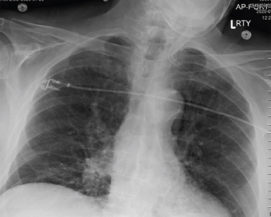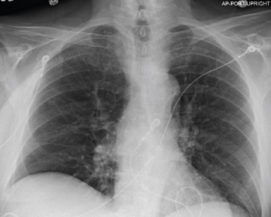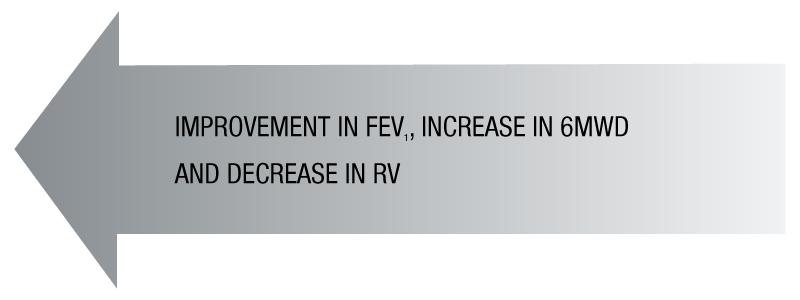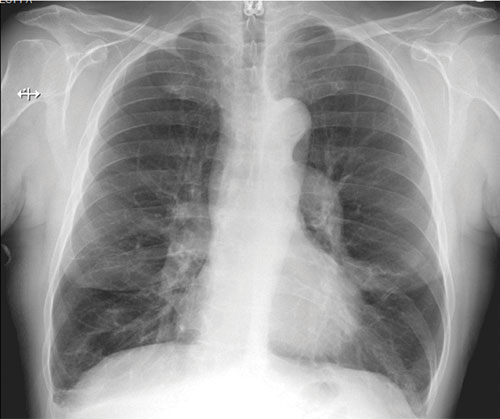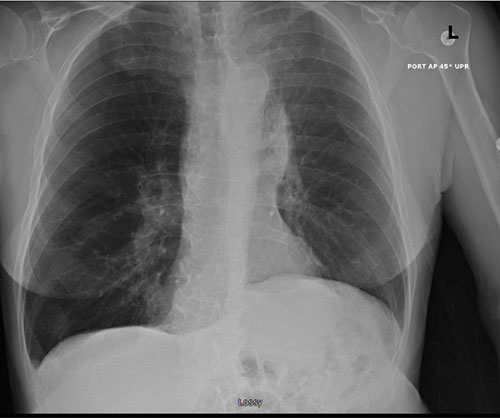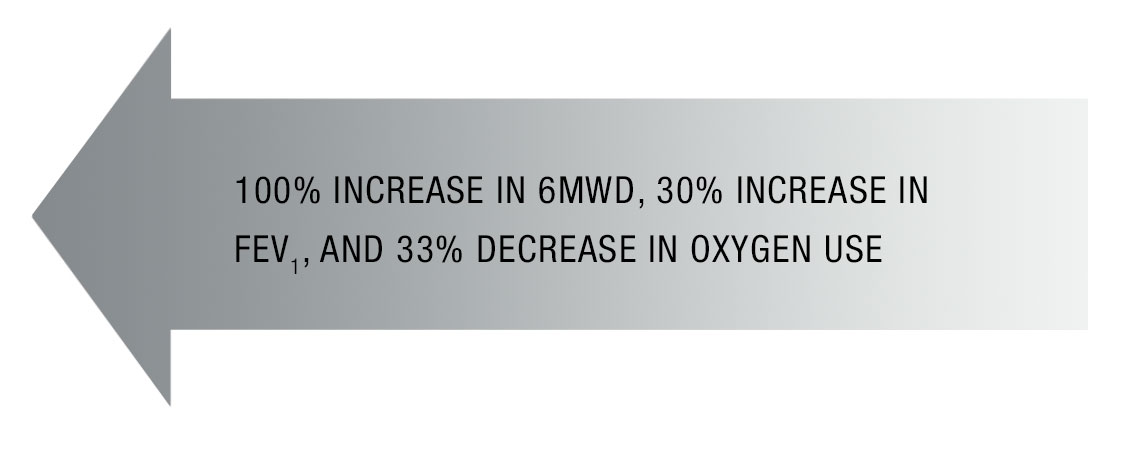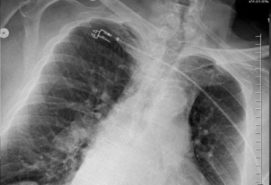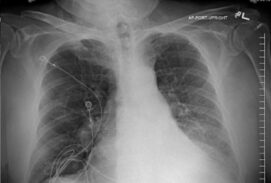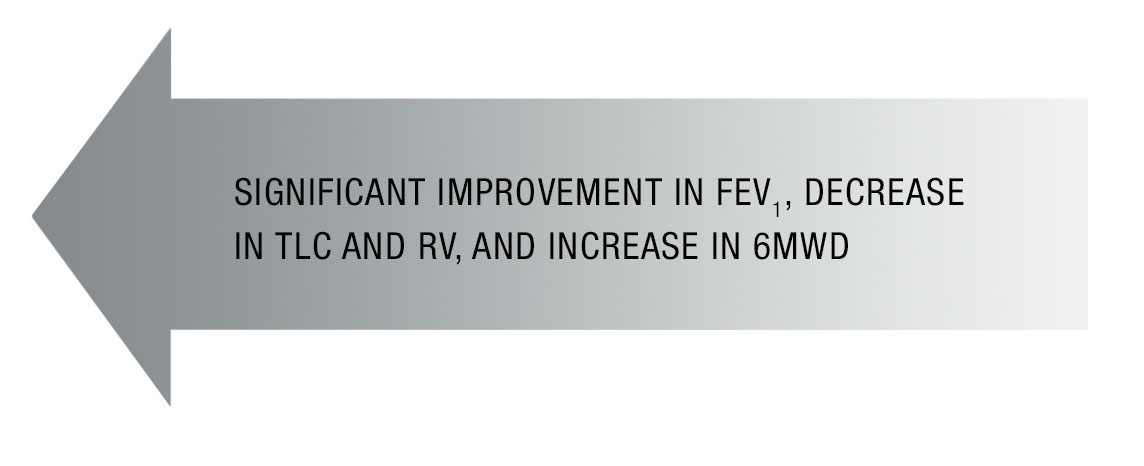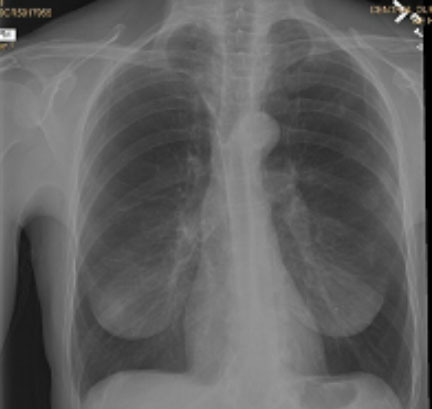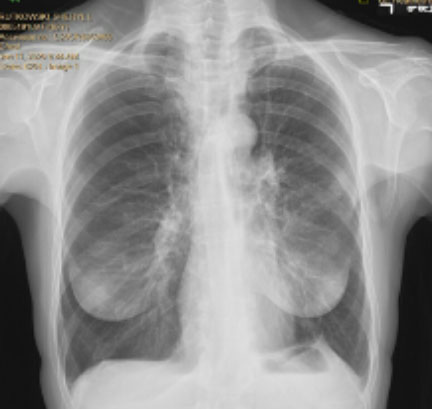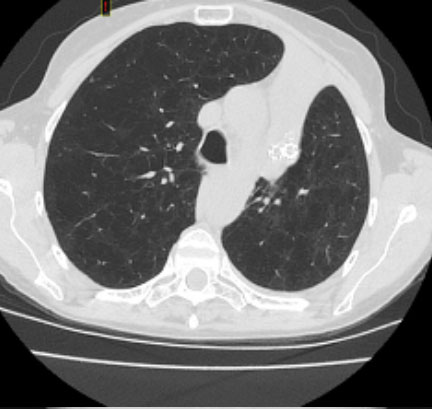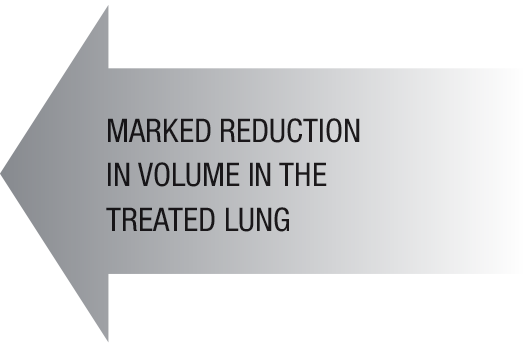65-year-old female with Alpha-1 antitrypsin has 28% improvement in FEV₁
Clinical Spotlight:
65-year-old female with Alpha-1 antitrypsin has 28%
improvement in FEV1
| Patient Profile | ||
|---|---|---|
| Quality of Life Goal | Wants to be able to travel with family, go to the beach and play with her grandchild. | |
| Condition |
|
|
| Smoking History |
|
|
| Management Medications |
|
|
| Oxygen Use |
|
|
| Baseline FEV1 |
|
|
| Symptoms |
|
|
Procedure Details:
-
Pulmonary rehab prior to treatment
-
Collateral ventilation negative by Chartis® System
-
Four Zephyr Valves placed in right lower lobe (RLL)
-
Patient had a pneumothorax post-procedure and was discharged to home with a Heimlich valve
Pre and Post-Imaging:
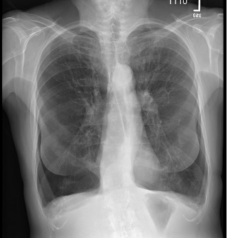
Pre-procedure
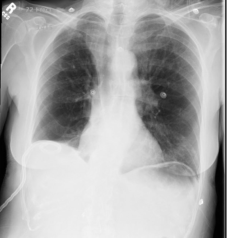
Post-procedure
Pre and Post Lung Function Chart:
| ASSESSMENT | PRE-PROCEDURE | POST-PROCEDURE (3 MONTHS) |
|---|---|---|
| FEV1 | 660 mL | 840 mL |
| FEV1 (% pred) | 24% | 31% |
| RV | 8.08 L | 4.91 L |
| RV (% pred) | 383% | 241% |
| TLC | 9.87 L | 7.69 L |
| TLC (% pred) | 187% | 146% |
| DLCO (% pred) | 38% | 50% |
| 6MWD | 279 m | 369 m |
Case was Completed by:
Franklin Mcguire, MD Frye Regional Medical Center, NC.
Patient Outcome:
-
Reduced oxygen usage from “Continuous” to “As needed”
-
Improved appetite and has gained back weight
-
Energy level improved
-
Anxiety level decreased
-
Confidence improved
-
After the valves were placed, the patient was able to go to the beach with her grandchildren and was able to run around with them
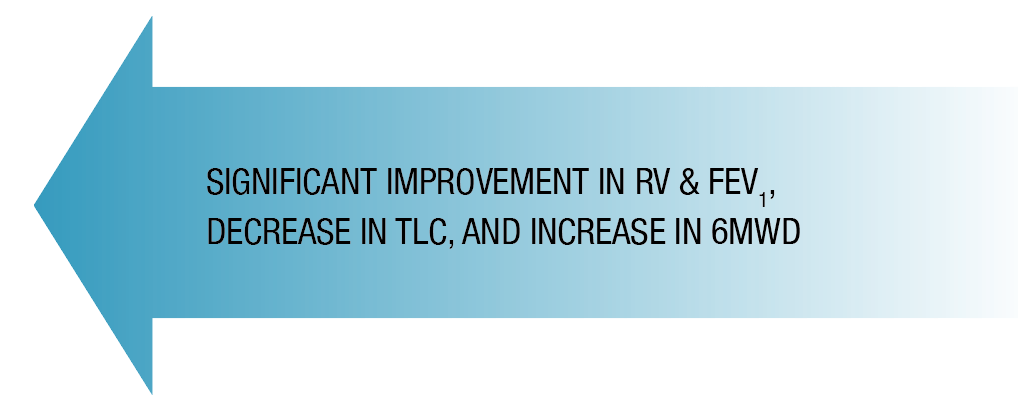
How the Zephyr Valve Works:
The Zephyr Valve is a one-way valve designed to reduce hyperinflation of the lungs caused by severe emphysema/COPD. In a minimally invasive bronchoscopic procedure, an average of four tiny valves are placed in the airways to block off the diseased parts of the lungs where air gets trapped, causing hyperinflation and severe shortness of breath. The Zephyr Valve reduces lung hyperinflation by allowing trapped air to escape and preventing new air from entering that diseased lobe. This allows the healthier parts of the lung to function better and results in patients being able to breathe more easily and experience less shortness of breath.¹
The Zephyr Endobronchial Valve is removable, and thus preserves future therapy options.
If you have a patient to refer, find a treatment center in your area.
Zephyr Valve Patient Benefits and Risks:
Patients treated report significant improvements in lung function, exercise tolerance, and quality of life.1
Complications of the Zephyr Endobronchial Valve treatment can include but are not limited to pneumothorax, worsening of COPD symptoms, hemoptysis, pneumonia, dyspnea and, in rare cases, death.
Results from clinical spotlights are not necessarily predictive of results in other cases. Results in other cases may vary.



